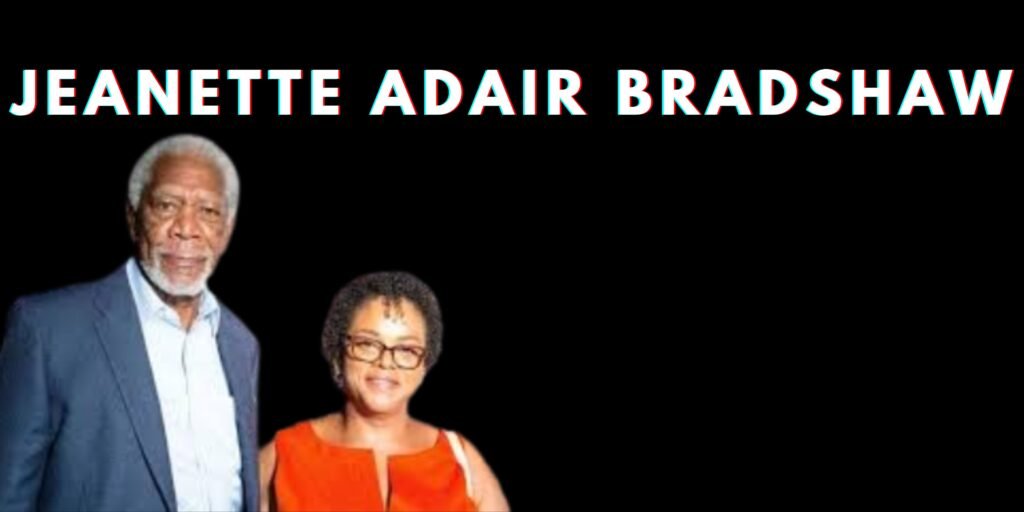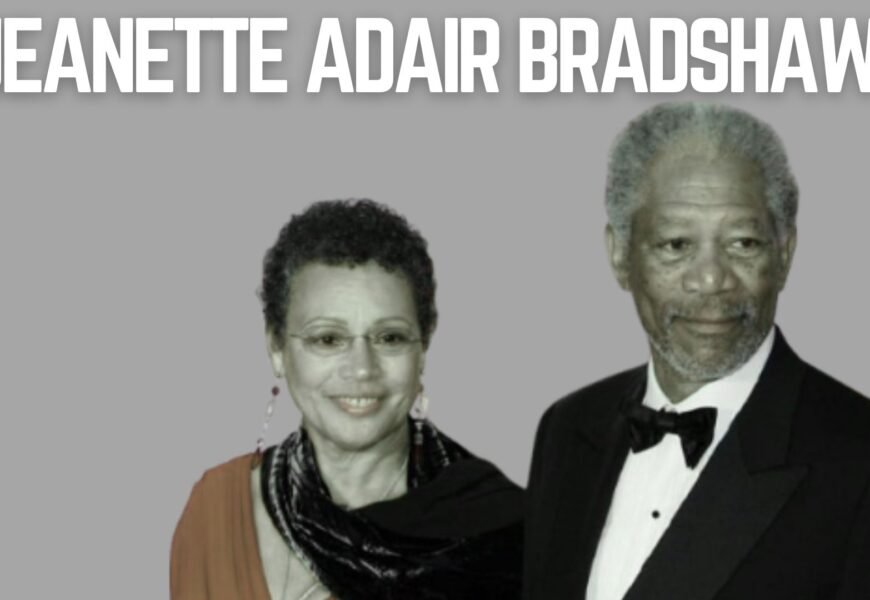When people hear the name Jeanette Adair Bradshaw, their minds often flash to the glint of red-carpet cameras trained on her former husband, Academy Award–winner Morgan Freeman. Yet, long before fame’s klieg lights shone on the couple in the late 1960s, Jeanette’s life was guided by a conviction that influence is most powerful when applied quietly. Born in the segregated South during the final throes of Jim Crow, she learned early that dignity could be preserved through discretion. Her 1967 marriage to Freeman placed her, almost overnight, on the edges of Hollywood’s social scene—but she never accepted the unwritten rule that a star’s spouse must become a star themselves. Instead, Jeanette Adair Bradshaw treated visibility as a tool to redirect resources toward communities she believed were being overlooked, even as she cultivated an almost paradoxical anonymity that allowed those projects to flourish free from the drama of celebrity gossip columns.
Table of Contents
Carving an Independent Identity
Contrary to popular myth, Jeanette’s life story is not an appendage to Morgan Freeman’s résumé. After relocating from Memphis to New York in the early 1970s, she pursued bookkeeping, a profession that satisfied her twin passions for order and accountability. She found numbers calming; they offered objective truths unmarred by rumor or acclaim. Friends recall that she would leave cocktail receptions early so she could balance ledgers for small, Jeanette Adair Bradshaw minority-owned businesses that could not afford professional accountants. Through this work, she discovered how even modest interventions—such as structuring debt, automating payroll, and filing local tax paperwork on time—could mean the difference between a neighborhood grocer closing its doors or surviving long enough to employ the next generation. In effect, Jeanette Adair Bradshaw placed herself at the quiet center of countless micro-rescues, each one too small to attract headlines but large enough to reverberate through entire families.
Philanthropy Under the Radar
Because press coverage of Jeanette’s philanthropic efforts is scant, many assume she did little beyond attending charity galas. The reality is almost the reverse. She systematically avoided black-tie fund-raisers (where a single table often costs more than a year’s community college tuition) and instead cultivated “kitchen-table philanthropy.” This meant identifying grassroots organizers, meeting them in their own homes, and writing modest checks—sometimes as small as fifty dollars—precisely where they would do the most good. Over time, these micro-donations coalesced into larger initiatives. One such project was a tutoring co-op in the South Bronx that operated out of an Episcopal church basement. It began in 1974 with eight children and two volunteers; by 1980, it was serving more than a hundred students a week, boasting reading-level gains that outpaced those of several well-funded school-district programs. Jeanette Adair Bradshaw never allowed her name on the letterhead, insisting that anonymity ensured parents judged the service on outcomes, not celebrity association.

Advocating for Arts and Education
Jeanette’s quiet generosity extended beyond academics. She understood that art programs are often the first to get slashed when budgets tighten, yet they are vital for nurturing emotional intelligence and cultural pride. In the late 1980s, after she and Freeman had formally divorced, she partnered with a coalition of Harlem muralists to fund paint , Jeanette Adair Bradshaw ladders, and scaffolding for public art designed by local teenagers. The resulting street-side canvases depicted unsung civil rights figures, Afro-Caribbean mythic heroines, and daily joys such as a grandmother braiding her granddaughter’s hair on the stoop. This visual narrative defied the neighborhood’s “danger” stereotype perpetuated by tabloids. Forty years later, some of those murals still stand, protected by preservation grants that trace their seed money back to Jeanette Adair Bradshaw unpublicized checkbook. Importantly, she did not simply write checks; she attended planning meetings, accompanied students on supply runs, and, according to artist Roberto “Beto” Flores, once spent six hours in July heat handing out bottled water to teenagers atop a two-story scaffold.
Lessons We Can Learn from Jeanette’s Approach
Jeanette Adair Bradshaw philanthropy offers a counter-narrative to the era of hashtag activism and billion-dollar pledges announced on social media. Her guiding principle was proximity: you cannot change a community from a boardroom nine states away. By sitting with parents to draft grant proposals, walking the broken sidewalks kids traveled to after-school programs, and keeping meticulous spreadsheets to track every dime, she personified a hands-on ethic. She also challenged the assumption that philanthropy must scale to be meaningful. In a culture obsessed with “unicorn” metrics—millions raised, billions served—Jeanette reminds us that transformation often begins when one person with a bit of excess meets one person in need of opportunity. Ultimately, her life exemplifies that privacy can serve as a form of protection, enabling both the benefactor and the beneficiary to focus on the results rather than the spectacle. In choosing the shadows, Jeanette did not diminish her light; she refined its beam until it landed precisely where it was most needed.
The Enduring Impact
Critics may argue that because Jeanette rarely spoke publicly about her work, assessing her true impact is difficult. Yet philanthropic effectiveness is not solely measured by publicity or plaque inscriptions; it is measured by outcome. Former students of the South Bronx tutoring co-op have gone on to become teachers, engineers, and community organizers. Artists who cut their teeth on Harlem’s murals now mentor the next generation in borough charter schools. Small businesses whose books she balanced still anchor neighborhoods vulnerable to gentrification. These legacies, woven together, form a mosaic of quiet victories that dwarf the fleeting buzz of celebrity news. They suggest that Jeanette Adair Bradshaw’s greatest contribution was not her proximity to fame but her insistence that ordinary people, armed with patience and a ledger, can alter the trajectory of entire zip codes.
Frequently Asked Questions
1. Who is Jeanette Adair Bradshaw?
Jeanette Adair Bradshaw is best known as the first wife of actor Morgan Freeman. Still, beyond that association, she is an accomplished bookkeeper and philanthropist whose discreet giving has supported education, small businesses, and community arts initiatives since the early 1970s.
2. Why is there so little public information about her charitable work?
Jeanette deliberately kept a low profile, believing that anonymity shielded recipients from unwanted media attention and allowed projects to be judged on merit rather than celebrity association.
3. What causes did Jeanette Adair Bradshaw focus on most?
Her giving centered on three pillars: literacy and tutoring programs for underserved youth, micro-loans, bookkeeping assistance for minority-owned small businesses, and grants for community art projects that preserved local culture and empowered young creatives.
4. Is Jeanette Adair Bradshaw still involved in philanthropy today?
Although she is now in her eighties and largely retired from active management, she reportedly continues to advise younger donors within her network. She maintains scholarship funds established during the 1990s, ensuring that her impact endures through the leadership of her successors.
5. What lesson can modern philanthropists draw from her legacy?
Jeanette’s story illustrates that effective giving is less about headline-grabbing sums and more about sustained hands-on engagement. By aligning resources with clear, measurable needs and remaining accountable at every step, even modest donors can catalyze lasting change without ever seeking the spotlight.











